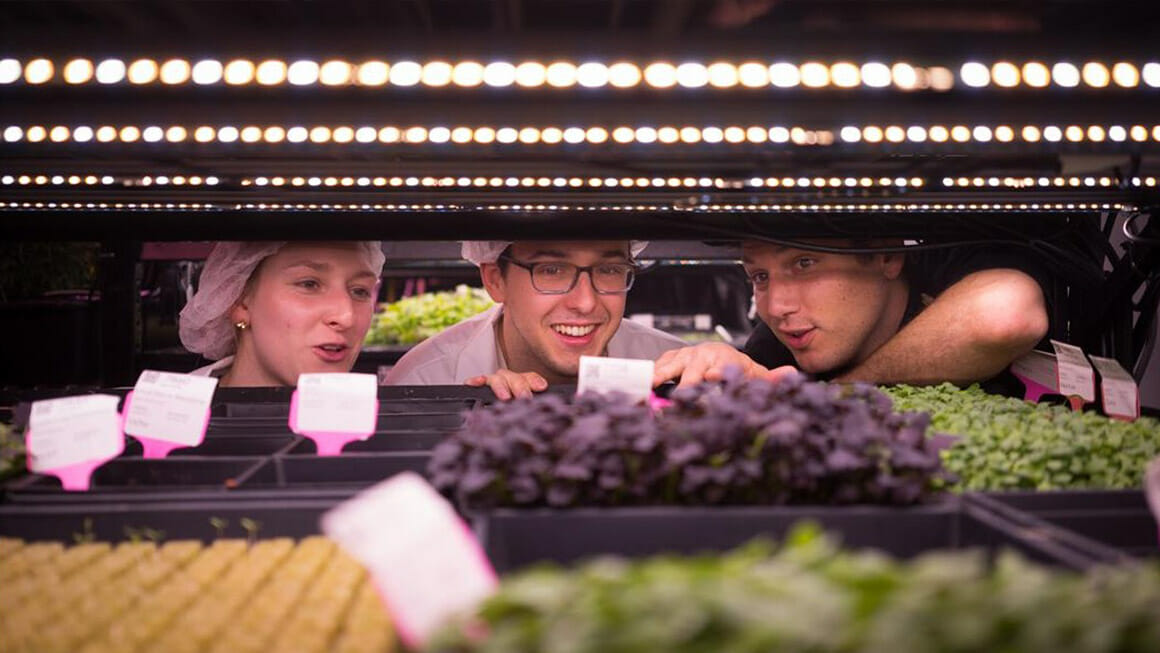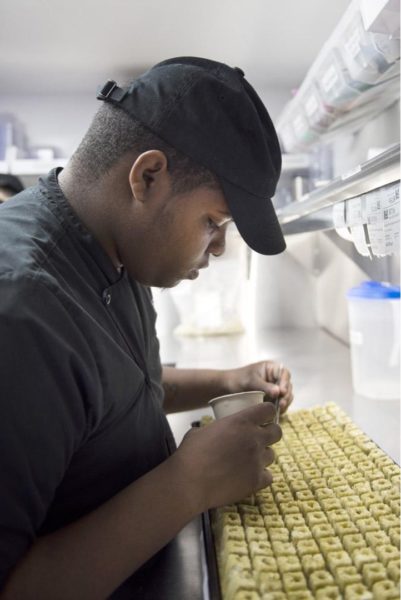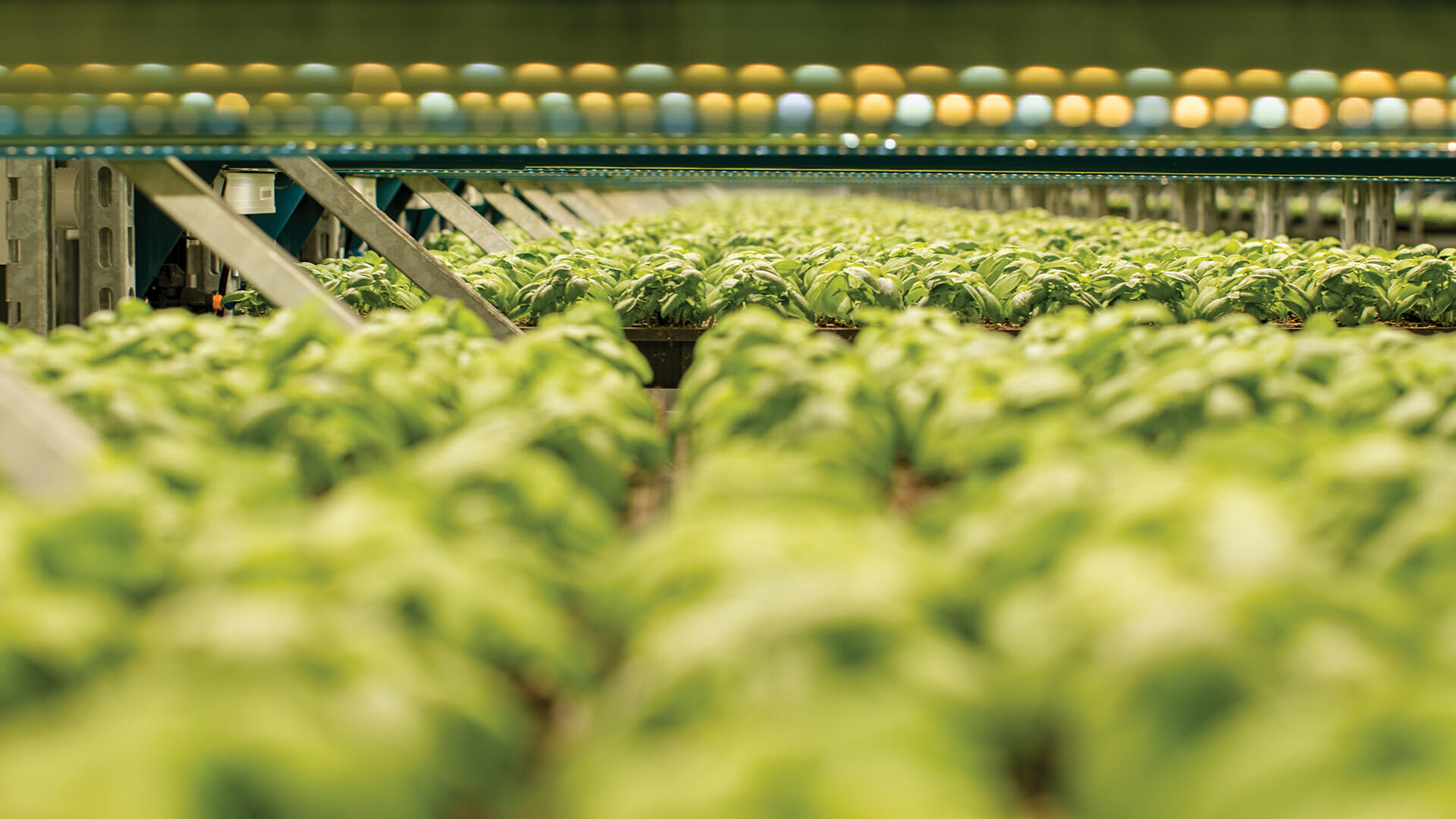
24 Aug Webinar Blog: Vertical Farming Panel with Farm.One
Cutting-edge farmers around the world are building high-tech vertical farms to answer environmental concerns, food shortages, and consumer demand for fresh, delicious, and healthy local food and produce. As vertical farming becomes increasingly necessary to optimize space, potential indoor cultivators seek experienced growers for information and wisdom about this burgeoning industry. Fluence recently hosted a webinar featuring two experts in the field to assist growers who are considering going vertical.
Sharing his first-hand experience was Rob Laing, the CEO and founder of Farm.One–a successful Manhattan-based vertical farm, and joining him was Dr. Abhay Thosar, Fluence’s director of horticulture services.
Farm.One grows rare and exotic produce year-round, mainly supplying the New York restaurant industry with edible flowers, herbs, and microgreens. The farm grows as many as 100 different plants at any given time, according to Rob.


Farm.One grows rare and exotic produce year-round, mainly supplying the New York restaurant industry with edible flowers, herbs, and microgreens. The farm grows as many as 100 different plants at any given time, according to Rob.
Because the pandemic ground the NYC restaurant industry to a hault, Rob said Farm.One was able to quickly and efficiently pivot to growing more consumer-friendly greens in response, opening a new revenue stream during a difficult time and saving his business from disaster.
Fortunately, all the technology and practices that were in place for growing greens for chefs were able to be transitioned smoothly into providing greens for another type of customer.
The Farm.One hydroponic growing environment is pesticide-free and uses Fluence RAZR LED lighting technology to deliver energy-efficient, targeted illumination to the plants. Additionally, Dr. Abhay’s horticulture services team works to ensure customers like Farm.One are supported every step of the way.
Abhay notes that his group is uniquely qualified to support operations like Farm.One because they are technical experts as well as experienced cultivators. Fluence doesn’t merely sell the highest-quality lights, he adds, but rather offers a holistic solution, working with the customer to understand their objectives, assess their current lighting scenario, and discuss optimized lighting conditions.
Post-sale support is equally important, Abhay asserts. “Growers have a lot of questions about LEDs, and fear of the unknown,” he said. “That’s exactly where our team comes in and we work with the grower, hold their hands, and we give them a support system that they can tap into.”
Fluence helps customers learn to optimize energy consumption, increase productivity per square meter, reduce water consumption, and enhance the quality of the product. During the advent of vertical farming, lighting was a limiting factor; however, with the advancement of LED technology this is no longer the case. “We can deploy the LEDs in a targeted space in very close proximity to the plants, and we can use spectrum to steer plant performance,” Abhay reported.
Rob said the past year was tough but ultimately led to creativity and innovation — learnings he is happy to share with other vertical farmers as they navigate this emerging field together. At the end, webinar attendees were invited to ask the panelists questions:
Q: Can you talk a bit about the evolution of vertical farming?
A: Until now, we were looking at a lot of fluorescent tubes that were being used in vertical farming. They were not as efficient. They were built for the human eye and not necessarily for optimizing plant performance. We have seen in the past 10 years LEDs for vertical farming have evolved so much… the efficiency, spectrum, ease of application. Growers can now apply the desired micromole level that they need for the crop and they don’t have to pay exorbitant prices because now the efficiency of the modules is much better.
Q: Rob, as you were designing and setting up your farm, what were some of the factors you were looking at and planning for in terms of lighting technology?
A: We were curious about performance. If I grow something with hydroponics under LED lights, is it going to taste good? We tested older LEDs, fluorescents, and newer LEDs from a variety of manufacturers. We looked at a number of factors and also thought about how replacing equipment is a nightmare, so you’d better find a light that’s going to last for thousands and thousands of hours. And you want to work with people who produce a reliable product.
Q: What are the top 3 considerations that drive facility design?
A: The first one is crop choice. What type of crops do you want to grow? Number two is your customers — who are you going to sell it to? Third, think about automation, an important component of vertical farming.



